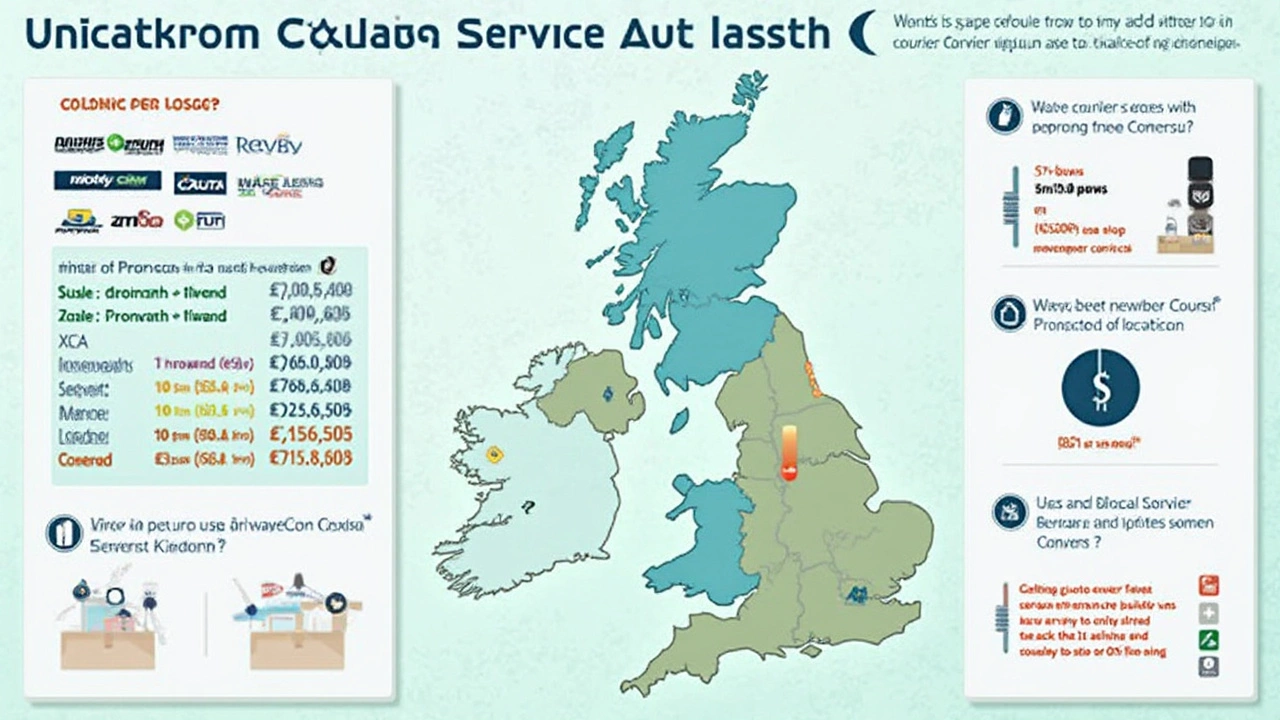Ever wondered what you're actually paying for when you ship something across town or country? This is where the 'rate per mile' in courier services comes into play. It's that magic number that helps you figure out how much it costs for a package to travel from point A to B. Sounds pretty important, right?
But hold on, the rate isn't just a flat fee out of nowhere. Nope, it's shaped by a bunch of factors like fuel prices, distance, and even how speedy you want that package to move. So if you're sending grandma's cookies or your business products, knowing this can save you a ton of cash—or at least help you budget better.
- Understanding Rate Per Mile Basics
- Factors Affecting Courier Rates
- Tips for Reducing Delivery Costs
- Comparing Rates Among Popular Couriers
Understanding Rate Per Mile Basics
At its core, the rate per mile in courier services is simply how much you pay for each mile your package travels. It's a straightforward concept but understanding it thoroughly can really help when you’re trying to pinch pennies on shipping.
So how's this rate determined? First, consider the base rate—that’s the standard charge covering the initial costs when a package hits the road. From there, things get interesting. Couriers need to factor in variables like fuel prices, the type of delivery vehicle, labor costs, and even tolls. If gas prices shoot up, that could hike up the rates—you'll notice the effect most when sending stuff over long distances.
There’s also the distance factor. Usually, the rate per mile decreases as the distance increases. It’s kind of like a bulk discount because the further your package goes, the cheaper each mile costs. But beware of cutoff points where rates dramatically change. These cutoff points can sneak up on you if you're not paying attention.
Check this out in a nutshell:
| Mileage | Rate Per Mile |
|---|---|
| 0-50 miles | $1.00 |
| 51-200 miles | $0.85 |
| 201-500 miles | $0.70 |
Remember, the type of item you’re delivering can also affect costs. Fragile goods or hazardous materials might require special handling, pulling those rates up a notch. If your package needs to get there yesterday, express services add another layer to the cost equation.
Basically, if you get a grip on what’s driving these rates, you can strategize better. Maybe opt for flexible delivery times if it saves you money, or choose the slow lane instead of express. Knowing the ropes can really sway how you decide to send a package, whether you’re mailing a birthday gift or fulfilling customer orders. Knowledge is the real currency here.
Factors Affecting Courier Rates
Okay, so you’re trying to get to the bottom of what makes those courier services price labels go up or down, right? It’s like peeling an onion—there are layers. First up, fuel prices. Yeah, gas prices can go haywire, and when they do, the cost to ship stuff goes right along with them. Couriers have to cover those costs, and guess who ends up sharing the burden? That's right, us, the customers.
Then there's the good old distance factor. The further your package has to travel, the more miles it racks up, which directly bumps up the rate per mile. Of course, shipping across town isn’t going to set you back like a cross-country delivery.
Let’s not forget delivery speed. Want that package there yesterday? Speedy deliveries, like next-day or same-day, usually cost extra simply because they need more manpower and resources to make it happen.
Package size and weight also play a big role. Larger, heavier packages take more space and fuel, so naturally, they cost more to send. Plus, the nature of the items can affect rates. Fragile or high-value items might require extra precautions, which can add to the cost.
Finally, competition is just as influential. More players in the neighborhood might mean better deals and promotions. Couriers compete for your attention and money, often dropping rates to win your business.
| Factor | Influence on Rates |
|---|---|
| Fuel Prices | High fuel = Higher rates |
| Distance | More miles = More cost |
| Delivery Speed | Faster = Pricier |
| Package Size & Weight | Bigger/Heavier = Higher rates |
| Competition | More competition = Potential discounts |

Tips for Reducing Delivery Costs
Looking to save some cash on shipping? Who isn't, right? Let's talk about some smart ways to cut down those delivery costs without sacrificing service quality.
First off, consolidating shipments can be a game-changer. Instead of sending several smaller packages, group them together. You'll often snag a better rate and also reduce the hassle of tracking multiple deliveries. It's like the 'bulk buy' of the courier world.
Next, be strategic about package sizing. Couriers often use the size and weight of a package to determine costs, so keeping packages as small and light as possible can lead to savings. Invest in efficient packing materials – less space, less cost.
Also, choosing your shipping speed wisely can make a huge difference. Examine whether you really need express delivery or if standard will do. Most courier services charge a premium for next-day shipping. A little flexibility can save a lot.
- Negotiate rates: If you're a regular shipper, don't be shy about asking for discounts. Many companies offer reduced rates for frequent customers.
- Use prepaid shipping: Some couriers offer prepaid options with a lower rate per mile. It's like buying shipping credits at a discount.
And here's a handy tidbit: If you're shipping internationally, always double-check if there are any duties or taxes applicable. These can sneak up and inflate costs if you're not prepared.
For those who love data, let's look at a quick comparison of average rates:
| Courier | Average Cost Per Mile | Discounts & Offers |
|---|---|---|
| Courier A | $0.58 | 10% off on bulk |
| Courier B | $0.65 | Loyalty discounts |
| Courier C | $0.54 | Prepaid savings |
So there you have it! By tweaking a few things, you can reduce those pesky shipping fees and keep more money in your pocket.
Comparing Rates Among Popular Couriers
If you're trying to get the best deal on shipping, it's crucial to compare the rates among popular couriers. This can be a bit like finding the right deal on a new pair of sneakers—a little homework goes a long way.
First off, let's talk about UPS. These guys are like the reliable best friend in the courier world, known for their consistent service. Their ground shipping price per mile often hovers around $0.75 to $1.50, but remember, it varies based on distance and package weight.
FedEx is another big player here. They’re kind of like the speedy sibling always in a rush, which is fantastic if you need quick delivery. Their express delivery can push costs up to about $2 per mile, especially if it’s overnight. However, for standard shipping, you might see lower figures, around $0.70 per mile.
Then we have DHL, the international go-getter. If you're dealing with cross-border deliveries, they're a solid choice. Their pricing structure can be more complex, but typically for domestic, expect rates similar to FedEx's standard pricing. For international shipments, though, rates can fluctuate significantly based on import duties and taxes.
Here's a quick comparison to visualize it better:
| Courier | Average Rate Per Mile (Domestic) |
|---|---|
| UPS | $0.75 - $1.50 |
| FedEx | $0.70 - $2.00 |
| DHL | Varies (similar to FedEx) |
Don't forget the small but mighty local couriers too. They might not have the brand name, but they can be more flexible. If your delivery's all local, these lesser-known services might offer significantly lower rates. Check their customer reviews and ensure they provide reliable service before making a switch.
So, what’s the takeaway? Compare these shipping rates and terms carefully. You might find that the extra couple of minutes spent lining up the numbers can lead to noteworthy savings, especially if you're sending stuff regularly.





